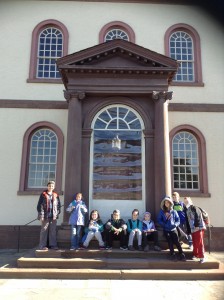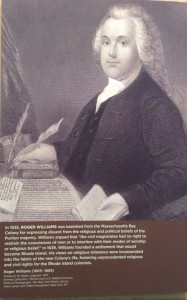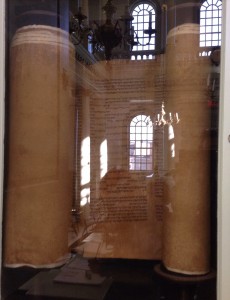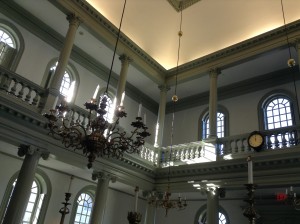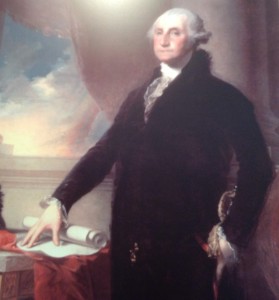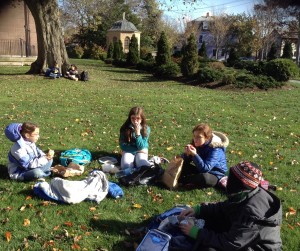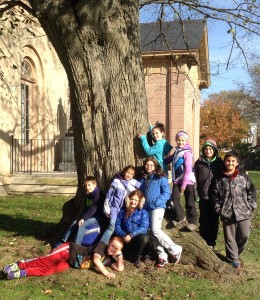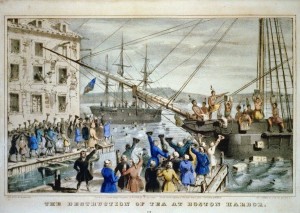For the past few weeks the fifth grade has been learning about taxes in colonial America. Right now we are learning about the Boston Tea Party, how the tea tax was put on the colonists and some who called themselves Patriots went again King George and led to the American revolution. Some were with King George and thought the tea tax was not much to pay. This led to the Boston Tea Party in 1773. People from both sides came together and had a debate at the Old South Meeting House on if the tea tax should stay or get repealed. We are going to go to the Old South Meeting House to re-enact the tea tax debate. I have been very intrigued by this topic and am very exited for this field trip.
Fifth Grade
Do the ends justify the means?
In different words, this question has been raised lately, multiple times.
This week we read that Mae Tuck killed a man to save a child, her family, and possibly the fate of humankind in our class novel, Tuck Everlasting by Natalie Babbitt. But did she have to kill him? Was that the right thing to do? Was that her only option? What might she have done instead?
Students were riveted by the story of the Burning of the Gaspee. As we prepare for the tea tax debate, we are looking closely at the many catalysts for the American Revolution. While some colonists wrote letters to express their feelings of discontent, many others reacted with violence.
In fifth grade, we will continue to wrestle with this question. Is it ok to do something wrong if it is for the right reason? Do the ends justify the means? For the sake of a more generative discussion, I’d like to encourage parents and fifth graders to post any thoughts they have on this big question directly onto our blog. Thank you!!!
Fifth graders synthesized their knowledge by retelling the event, sharing the big ideas, and making predictions. Completed work included: slideshows, a news article, two cartoons, and a poster board display. Below are links to the student slideshows about the Burning of the Gaspee. You might need to copy and paste the link into your address bar.
https://docs.google.com/a/jcdsri.com/presentation/d/1lAGJ9CuRaFTsuyMOGcu9CwbOLIaHR-c-MW_jNKSKtSA/edit?usp=sharing
https://docs.google.com/a/jcdsri.com/presentation/d/1jUfUUKeW5Y4098b4v6mVk88v_xxzgL4vN8aCobPq3j0/edit?usp=sharing
https://docs.google.com/presentation/d/1OGpvFtRXCW3Pm5Fx6kCOrfgy-Fl07PlquAewLNuThtg/edit?usp=sharing
https://docs.google.com/presentation/d/1fCSV74Er5SLZu3CPQ0UwxnurU9rrtR0f4k1d491PC0s/edit?usp=sharing
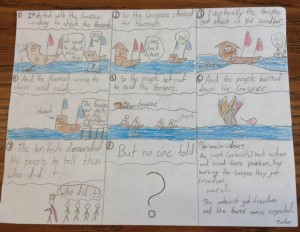
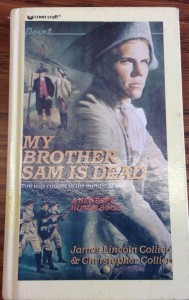
As
Elliana Ponders the Gaspee
This week in Social Studies we learned about the burning of the Gaspee, which took place in 1772 when the British were ruling Rhode Island. The British had passed a tax on the cargo in ships, so they had ships to collect the tax. In Rhode Island we were very upset by this, so we would smuggle the cargo and try to avoid the tax collector ship. Then when the British found out about the smuggling they hired a large boat called the Gaspee to collect taxes. The Gaspee was a mean and aggressive ship and the crew on the Gaspee made sure no one would smuggle. One day a cargo ship called the Hannah was sailing to Providence when the Gaspee asked them to stop and let them search their ship. When the Hannah said, “NO,” and started sailing away, the Gaspee started sailing after them, and for a long time this went on until the Gaspee got stuck in a sand bar because it was heavy. The Hannah then rushed to Providence to tell people what had happened. Then a drummer went out in the streets to gather up people to plan the attack on the Gaspee. After that they all got in 8 big row boats and went to the sand bar where the Gaspee was stuck, and at 12:00 they attacked it and lit the Gaspee on fire. When the British got word of this they questioned everyone about the attack and no one told. Overall I think it would have been really cool to experience the burning of the Gaspee, but I was born 200 years late.

Tamar’s Post about Bricks and a Farewell
This week the fifth grade did so many exciting things! One of them was making bricks for the brick oven. We mixed sand, cement, water, and clay in plastic tubs, then put the mixture into empty milk cartons, which we have been collecting since the beginning of the school year. We did all this in groups of three. The groups were: Jonah, Jordan and Tamar; Tomer, Jodd and Eliora; and Abby, Elliana and Shira.
This week is also Shira’s last week before she leaves for Israel on Tuesday. We have all made cards for her, and all of us have collaborated to make a PowerPoint where each of us creates a slide saying why we will miss her. The next time she will be here will be in August. She has been a huge part of our community, and we will all miss her.
Inspired by our Visit with a Master Artist
Last Tuesday we had quite a unique learning experience off-campus. We were fortunate to visit the studio of acclaimed artist Donald Gerola. Here’s a link to his webite, for those curious: http://www.donaldgerola.com/
Providence locals have certainly seen his sculptures around town.
It was our interdisciplinary Teva project that led us here. As the students worked on planning how to create an aesthetically pleasing structure to reuse rainwater in our garden, the class had to plan out what they think they will need to know and how they might learn it. Learning from a sculptor was on their list! Our Head of School, Adam Tilove, had recently met Gerola and helped us make contact.
As a classroom teacher, I can honestly say this was one of the most incredible field trips I have been on. Meeting a master artist, hearing his story, and walking through a studio filled with hundreds of creative masterpieces left me speechless. His response to my thank you email was simply beautiful. He wrote me that this was the only group of children to touch his soul and that we left magic behind in his studio. He also welcomed us to return in the spring.
As a result of our visit, students have new inspirations and ideas for moving forward with their project. They look forward to updating Gerola of their progress.
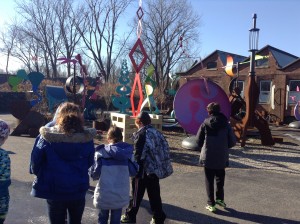
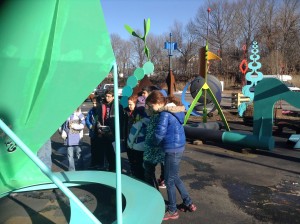
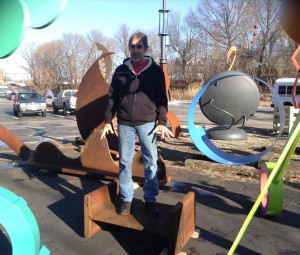

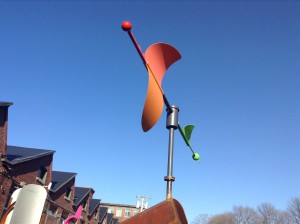
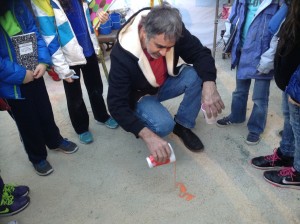
Tomer’s Post about Penn
This week has been full of learning. In social studies we have been focusing on the history of the Middle Colonies. On Wednesday we read a document, an old document, a primary source that William Penn, the founder of Pennsylvania, wrote in 1682. Unfortunately we did not get the real document, only copies, but it was still cool to see what he wrote. He wrote about how King Charles the Second gave him a piece of land which William Penn decided to call Pennsylvania, meaning ‘Penn’s Woods’. William wrote: “I the said William Penn, have declared, granted, and conformed…these liberties, franchises, and properties, to be held enjoyed, and kept by the freemen, planters, and inhabitants of the said province of Pennsylvania forever.” He meant that this place would be kept free and enjoyed forever. This was a big thing to say for that time.
To me it was interesting to see how William Penn and Roger Williams were the same. They were both founders of a state and both had big ideas about freedom. They also both had ‘William’ in their names. I think that this is one of the most interesting things that the fifth grade has learned so far in social studies.
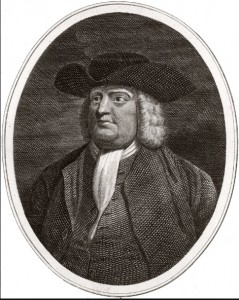
Fifth Graders Visit Touro Synagogue
Out of the classroom learning expeditions should enhance and deepen the learning that is taking place in the classroom. Last month, in connection with our studies of Colonial America, fifth graders visited Touro Synagogue. Because the students have been learning about this time period this semester, this expedition served as a platform for them to synthesize and deepen the ideas they’ve been thinking about and wrestling with.

